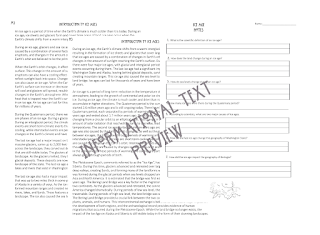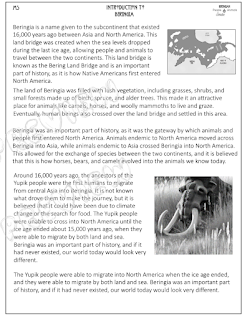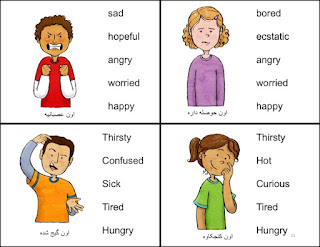Welcome! Everything teachers need to teach evolution, culture, language and archeology to middle and high school students.
Get Ready to Explore the Science of Ice Ages!
Visit Anthropologist In Heels to view new science curriculum for your students.
Differentiated Bering Land Bridge Lesson Plan for Middle Schoolers
Looking for a science curriculum about the Bering Land Bridge that will engage and excite your middle and high school students? Look no further than our lesson plan on the Bering land bridge, or Beringia! This fascinating topic covers a wide range of science concepts, from geology and geography, to biology and anthropology.
Through our differentiated science education approach, we provide a range of resources and activities that cater to different learning styles and reading levels. This ensures that all of your students have the opportunity to learn and engage with the material, regardless of their individual abilities.
In our lesson plan, your students will learn about the ice age and how it played a role in the formation of Beringia. They will also learn about the various human and mega fauna populations that migrated across the land bridge when it existed. Students will be introduced to the concept of extinct animals, and how the world would look different today if Beringia never existed.
Overall, our lesson plan on Beringia provides a rich and engaging learning experience for your middle and high school students. Not only will they learn about a fascinating chapter in Earth's history, they will also gain a better understanding of how geography and geology have shaped the world we live in today.
The Beringian subcontinent was home to many fascinating creatures, including the mighty mastodons. These large, elephant-like animals roamed the land, foraging for plants and leaves. Mastodons were covered in a thick coat of fur, which helped them to stay warm in the cold climate of Beringia. Despite their massive size, mastodons were actually quite gentle creatures and were not aggressive towards humans. Today, remains of mastodons have been discovered in Alaska, Canada, and Siberia, providing us with a glimpse into the world of these fascinating animals.
As middle and high school science teachers, you know that engaging your students in complex topics can be a challenge. That's why our lesson plan on the intersection of geography, human evolution, and climate change is the perfect fit for your classroom.
Through our differentiated science education approach, we provide a range of resources and activities that cater to different learning styles and reading levels. This ensures that all of your students have the opportunity to learn and engage with the material, regardless of their individual abilities.
In our lesson plan, your students will learn about the Bering land bridge, or Beringia, and how it played a crucial role in human evolution. They will also explore the impact of climate change on the formation and disappearance of Beringia, and how this has shaped the world we live in today.
Overall, our lesson plan provides a unique and engaging learning experience for your middle and high school students. By exploring the intersection of geography, human evolution, and climate change, they will gain a better understanding of how these forces have worked together to create our world today.
Teachers who are looking for a comprehensive curriculum for middle and high school science classes should consider this coloring page. It helps students understand the ice age and climate change that occurred, and the impact it had on people. The page explains the Bering Land Bridge and how it used to connect the Arctic Sea and Bering Sea. This page is a great resource for teachers who want to engage their students in learning about this important event.
Social Emotional Word Wall - Dari / English
The Dari – English Emotion Word Wall was created with students from Afghanistan in mind. Many of our students from Afghanistan have seen violence, lost family members or known trauma many of us cannot imagine. This activity was created was designed to help your Afghan students build their emotional vocabulary through age-appropriate word wall cards for daily or weekly vocabulary instruction.
This packet contains sixteen cube shaped translation cards that you can print and/or laminate. The amount of prep required is entirely up to you. Students will use these cards as visual cues to match the picture to their native language, connecting it to English. Translation cards may be used in folders, binders, wall art or in any social activity where you need the student to identify what they are feeling, and perhaps what they need.
You will find eight (8) task cards at the end of this packet. Task cards were designed to motivate your students to start talking about their feelings.
This packet has fully translated Words in Dari and English, some with clipart, some without. You will also find emotion words, black and white and in color, with simple definitions which can also be added to your word wall for extra clarity upon meanings and terms.
Anthropoligist In Heels Top Posts
-
With everything going on in Israel right now, today is a good day to publish Hebrew alphabet, numbers and charts. I will include maps as wel...
-
Do not let the Cyrillic Alphabet scare you! Let's start with a little history. The Cyrillic Alphabet was invented by two brot...
-
Si and Doch , the first word is French and the second is German. You say them after someone made a negative statement. The closest translati...
-
I signed up on Live Mocha for Urdu , the official language of Pakistan. I am not sure if I will learn Urdu, but if I do, Urdu will be t...
-
Intelligence and Bilingualism This is a big topic. I know that the monolingual (Americans and Brits) are going to take offense to this. ...
















